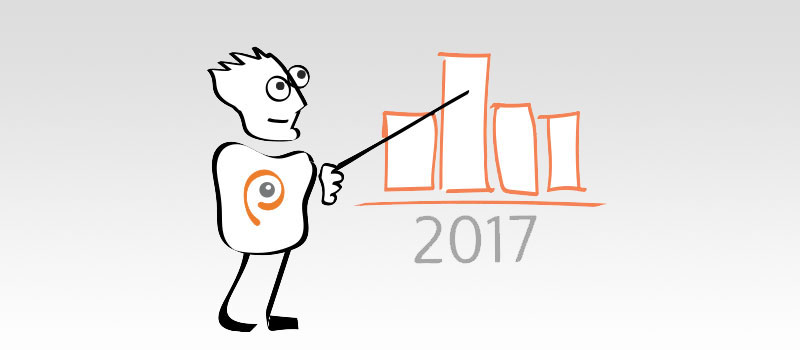When we last checked in a year ago, Perlara had just achieved three critical milestones: a product (PerlQuest), a validating Pharma deal, and first revenue – a small check, but revenue nonetheless. Over the course of 2017, we transitioned from startup with a prototype to company with a revenue-generating platform ($250,000 to date, not including monthly sublease income) and three PerlQuest partnerships. In 2018, we plan to double the pipeline as we continue to advance toward clinical proof-of-concept with our lead programs.
In keeping with our public benefit corporate philosophy of open science and open finances, this post provides high-level insights into our spending and resource allocations over the last 3.5 years. We hope that it serves as a helpful tutorial for lean biotech startups, especially in drug discovery/biopharma. And we hope other biotech companies will follow our example.
The graph below shows our monthly burn rate since company inception in April 2014 through September 2017. Between 2014 and 2016, the average monthly burn rate increased ~30% each year. During that period we were beta testing our platform and then prototyping our product. We kept our headcount to 6-8 full-time employees, and we hunkered down for as long as we could at biotech incubator QB3@953.
In 2017 our monthly burn stayed consistent with 2016 levels, until we fundraised in the summer of 2017. Spending is clearly increasing over time, but monthly burn never spiked more than two months in a row. The trough earlier this year occurred as we moved out of QB3@953 and operations slowed down for a month or two. The spike leading into Q3 corresponded to the initial closing of our latest round of financing, which enabled us to clear our books. Projecting forward to 2018, we will drive down our burn rate by streamlining operations and continued platform automation, and we will drive up our burn rate with revenues.
The cost of independence
After three years of incubation, it was time to get our own place. We currently reside in South San Francisco, the birthplace of biotech! The cost of moving out of QB3@953 was ~$30,000. We hired a few specialty consultants, a moving company, and new equipment that was shared at QB3@953. If you’re a biotech startup planning a move, use that cost as a baseline budget. And don’t forget your security deposit on the new place, which can be anywhere from 1-6 months of rent, cash upfront.
Two time-consuming and absolutely essential aspects of the move were:
- The regulatory/compliance paperwork involved in setting up shop in a new city: insurance (earthquake, pollution, flooding), safety and regulatory, permits, business license, updating the federal government, etc. You’ll need to find 20-30 hours for someone to set all that up.
- Updating suppliers with the new address. We have the help of HappiLabs to handle the scientific suppliers, but it’s not as easy as updating info on a website. Many suppliers require official forms to be filled out along with proof of your new address. When you’re buying from 100+ suppliers, this takes many hours.
There were a handful of new costs to us as we managed our own space. Here’s a brief rundown of operations-related costs and responsibilities that are handled behind the scenes by coworking spaces like QB3@953:
- Have you seen a PG&E utility bill before? It’s a headache. Moving out of an incubator introduced us to this new cost, about $8,000 per month.
- Janitorial is ~$1700/mo. Who is going to take out the trash and vacuum?
- Security is ~$800/mo. This includes specialty locks, cameras. Most of it is one upfront cost.
- IT support is ~$2-5k/mo
- Earthquake proofing the lab, ~$5,000, one-time cost
- Furniture cost is $20,000+. Desks, chairs, kitchen table, conference room tables, and a couch or two (plus one bean bag).
- Insurance (liability, pollution, earthquake, oh my!) is $20,000/yr
Professional fees start to add up
Lawyers continue to be a big part of our budget, and lawyer usage increased in 2017 as we negotiated partnership agreements, incurred patent filing costs, and raised another round of financing. It costs money to raise money, but we focused on getting the most out of every dollar we didn’t spend on science.
Summary
Here’s a breakdown of 2017 by the numbers:
The biggest changes from 2016:
- Overhead, which covers our increased rent and related costs of having our own space
- Legal, as mentioned above.
- CRO costs dropped because we stopped doing mission critical but expensive mouse work, which consumed the bulk of our external R&D costs in previous years.
As always, we aim to make life easier for patients with rare diseases, other biotech founders, and anyone running a lab. Feel free to reach out anytime with questions or comments.
Thank you to Tom Ruginis, our Finance and Operations advisor, and HappiLabs our Virtual Lab Manager for keeping this data organized and analyzable.





